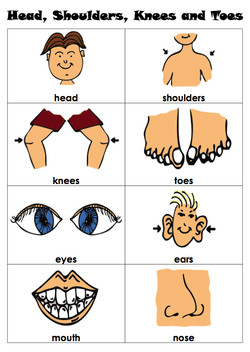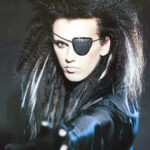“Head, Shoulders, Knees, and Toes” is more than just a children’s song; it’s a foundational learning tool loved by generations. This classic tune, instantly recognizable and endlessly engaging, serves as a fantastic introduction to body parts, rhythm, and movement for young learners. Whether you’re a parent, teacher, or caregiver, understanding how to effectively use the “Head Shoulders Knees And Toes Song” can unlock a world of fun and educational opportunities for children.
 This song is a great way to teach body vocabulary and lots more with primary kids!
This song is a great way to teach body vocabulary and lots more with primary kids!
Image showing diverse young children actively participating in singing and gesturing to the Head Shoulders Knees and Toes song in a classroom setting.
Why “Head, Shoulders, Knees, and Toes” is a Must-Know Kids’ Song
The enduring popularity of the “Head, Shoulders, Knees, and Toes” song stems from its inherent simplicity and catchiness. The repetitive lyrics and easy-to-follow actions make it incredibly accessible for even the youngest children. But beyond its fun factor, this song offers a wealth of developmental benefits:
- Body Awareness: It’s a direct and enjoyable way to teach children the names of different body parts. This kinesthetic learning approach, combining movement with song, helps solidify vocabulary and body awareness in a memorable way.
- Language Development: For toddlers and preschoolers, the song introduces new words in a context that’s easy to grasp. For English Language Learners (ELLs), it provides a foundational vocabulary lesson with built-in actions to aid understanding and retention.
- Gross Motor Skills: The actions associated with the song encourage physical activity and coordination. Children practice pointing, touching, and moving different parts of their bodies, improving their gross motor skills in a playful manner.
- Sequencing and Memory: The song follows a simple sequence, helping children develop an understanding of order and improve their memory skills.
- Versatility: The “head shoulders knees and toes song” is adaptable to various settings, from classrooms and music lessons to home play and therapy sessions. Its simple structure allows for numerous creative variations and extensions.
Teaching Body Parts with the “Head, Shoulders, Knees, and Toes” Song
Before diving into the song itself, it’s beneficial to pre-teach the body parts, especially for younger children or ELLs.
- Pre-teaching Vocabulary: Start by introducing each body part individually. Say the word clearly and point to or touch that part on yourself and then on the child. For example, “This is my head. Can you touch your head?”
- Interactive Activities: Turn body part identification into a game. Use commands like, “Point to your nose,” “Touch your ears,” or “Wiggle your toes.” You can also use a “Simon Says” variation: “Simon says, touch your shoulders!”
- Visual Aids: Flashcards or posters depicting children pointing to different body parts can be helpful visual aids. You can also use simple drawings or even have children draw their own body part pictures.
- Expanding Vocabulary: Don’t limit yourself to just the parts mentioned in the song. Introduce related vocabulary like “eyes,” “ears,” “mouth,” and “nose,” as suggested in the original article, to broaden their understanding of body part names.
 Download this visual for free!
Download this visual for free!
Free downloadable visual aid showing lyrics and actions for the Head Shoulders Knees and Toes song, ideal for classroom use.
Once children are familiar with the body parts, you can introduce the “head shoulders knees and toes song.”
Making Music and Movement Fun: Singing and Actions
The key to successfully teaching the “head shoulders knees and toes song” is to make it an engaging and interactive experience.
- Step-by-step Song Introduction: Begin by reciting the lyrics slowly, emphasizing each body part. Then, sing the song at a slow pace, focusing on clear pronunciation.
- Demonstrating Actions: Model the actions clearly as you sing. Encourage children to imitate you. Start with just a few body parts at a time, gradually adding more as they become comfortable.
- Repetition and Patience: Repetition is crucial for learning, especially with young children and ELLs. Sing the song multiple times throughout a session and in subsequent sessions. Be patient and allow children to learn at their own pace.
- Tempo Variations: Once children are familiar with the song, vary the tempo. Sing it slowly, then faster, then very fast! This keeps the activity dynamic and adds an element of fun and challenge.
Sequencing and Memory Skills through Song
The “head shoulders knees and toes song” is inherently sequential, making it an excellent tool for developing sequencing and memory skills.
- The Song’s Sequence: Explicitly point out the order of body parts in the song: head, then shoulders, then knees, then toes. Explain that there’s a pattern to the song.
- Sequencing Activities: After learning the song, engage children in sequencing activities. Ask questions like, “What comes after ‘shoulders’?” or “What body part do we sing about first?”
- Using Sequence Words: Incorporate sequence words like “first,” “next,” “then,” and “last” when discussing the song’s structure. For example, “First, we touch our head, next, we touch our shoulders…”
Creative Variations to Keep it Engaging
To maintain interest and cater to different learning styles, explore creative variations of the “head shoulders knees and toes song.”
- Humming Game: As described in the original article, create a “missing word” game. Hum certain words (like “head” or “shoulders”) instead of singing them, and have children guess the missing body part.
- Speed Changes: Continue to play with tempo. Try singing it very slowly and deliberately, then speed it up to a comical pace.
- Whispering/Shouting: Experiment with dynamics. Sing the song in a whisper, then shout it out loud. This adds auditory variety and can be very engaging.
- Partner/Group Versions: Have children sing and perform the actions with a partner or in small groups. This encourages interaction and collaboration.
- Instrumental Versions: Play a simple instrumental version of the song on a piano, ukulele, or other instrument, and have children sing along and do the actions. This adds another layer of musicality.
“Head, Shoulders, Knees, and Toes” for ESL/ELL Learners
The “head shoulders knees and toes song” is particularly beneficial for English as a Second Language (ESL) or English Language Learner (ELL) students.
- Benefits for Language Learning: The song provides a multi-sensory approach to vocabulary acquisition. The combination of auditory (song), kinesthetic (actions), and visual (demonstration) inputs enhances comprehension and memorization. The rhythm and repetition aid pronunciation and fluency.
- Slow and Clear Instruction: As emphasized in the original article, slow down your teaching pace for ELLs. Use clear and simple language, and provide ample repetition and modeling.
- Cultural Sensitivity: Be mindful of cultural backgrounds. While body parts are generally universal, ensure your actions and approach are respectful and inclusive of all learners.
Extending the Learning Beyond the Song
The “head shoulders knees and toes song” can be a springboard for further learning and activities.
- Related Activities: Follow up with body part worksheets, coloring pages, or drawing activities. Body part puzzles are also a fun and interactive way to reinforce vocabulary.
- Connecting to Other Songs/Books: Link the song to other songs and books about the body. There are many children’s books that focus on body parts and movement.
- Assessment: Observe children’s participation and their ability to identify body parts and perform the actions. This song offers a natural and informal way to assess their learning.
Conclusion
The “head shoulders knees and toes song” is a timeless classic for good reason. Its simplicity, catchiness, and educational value make it an invaluable tool for parents and educators. By understanding its benefits and utilizing creative teaching strategies, you can unlock the full potential of this song and provide children with a fun and engaging learning experience. So, put on your favorite version of the “head shoulders knees and toes song,” get moving, and watch the learning and laughter unfold!


